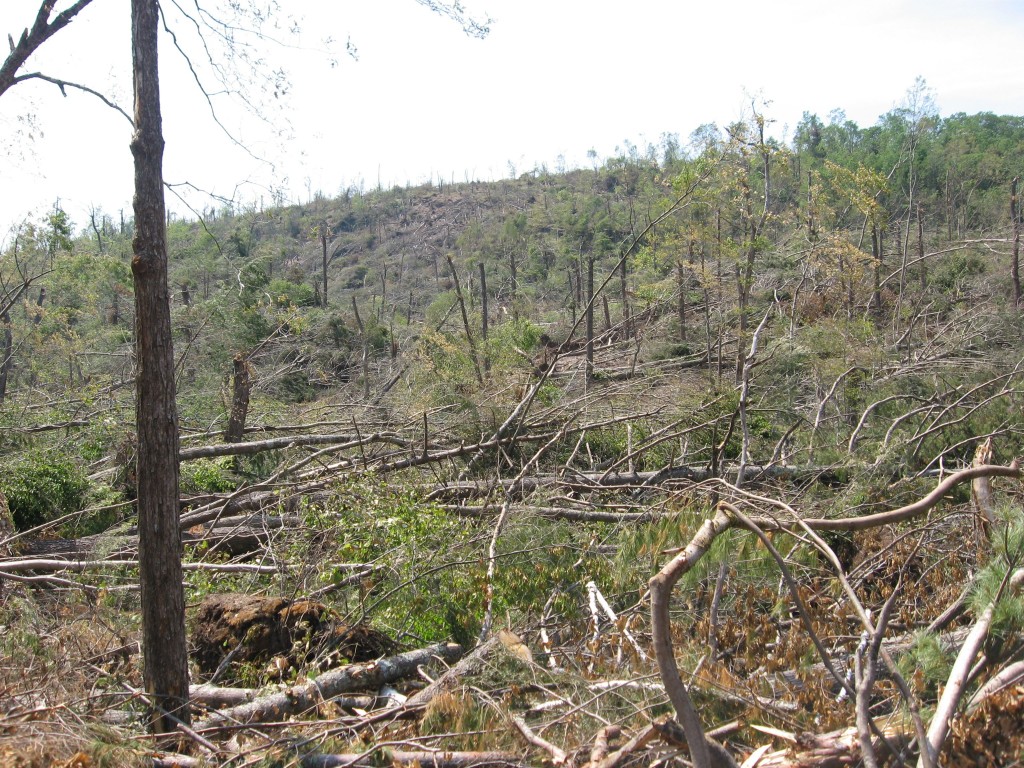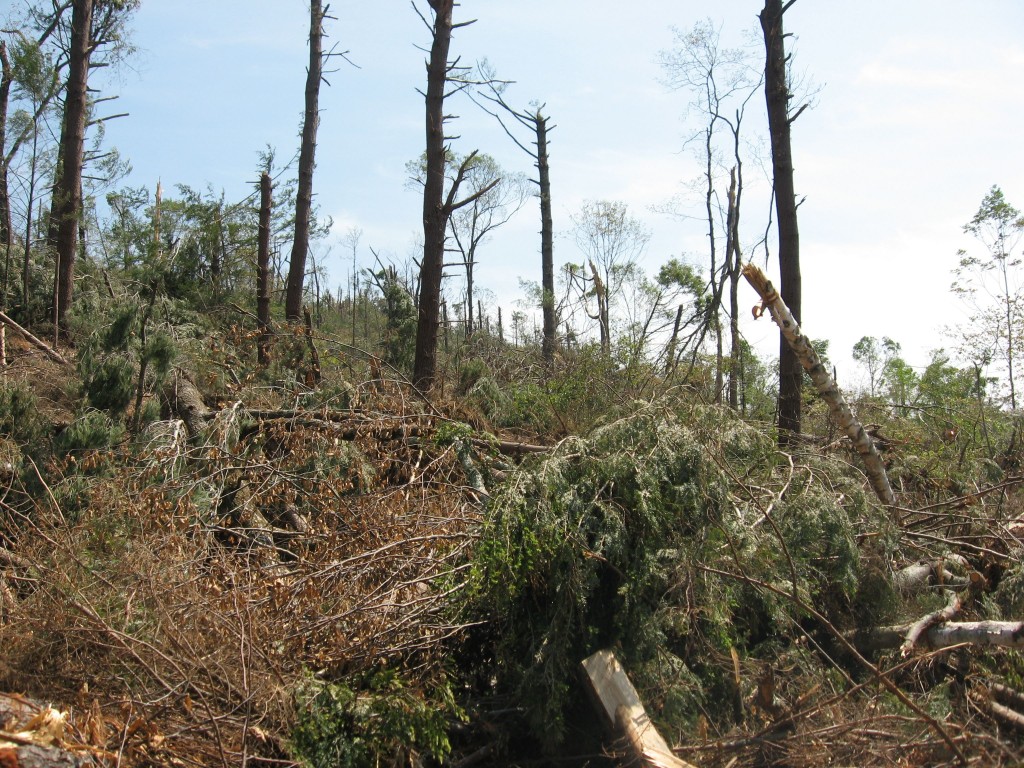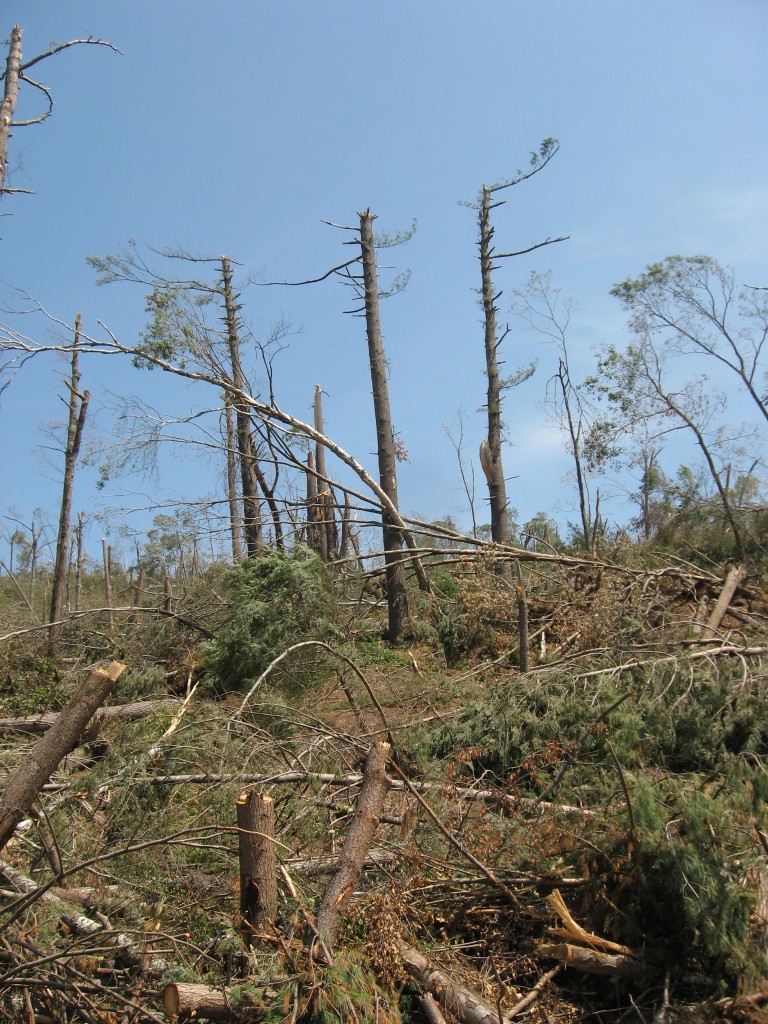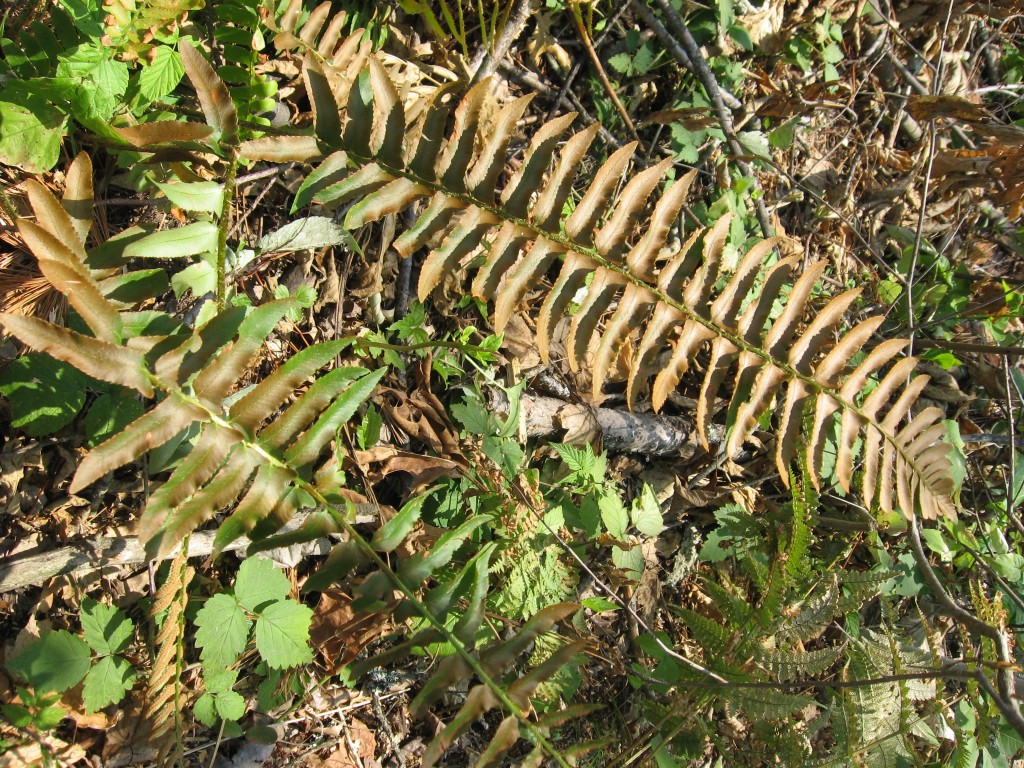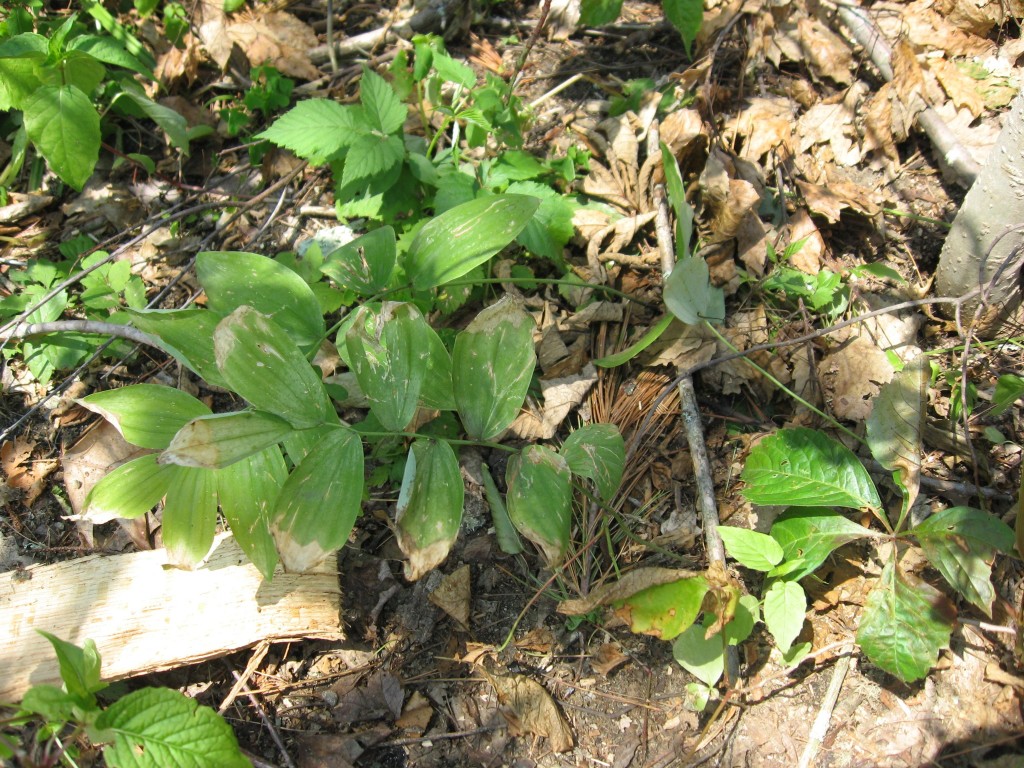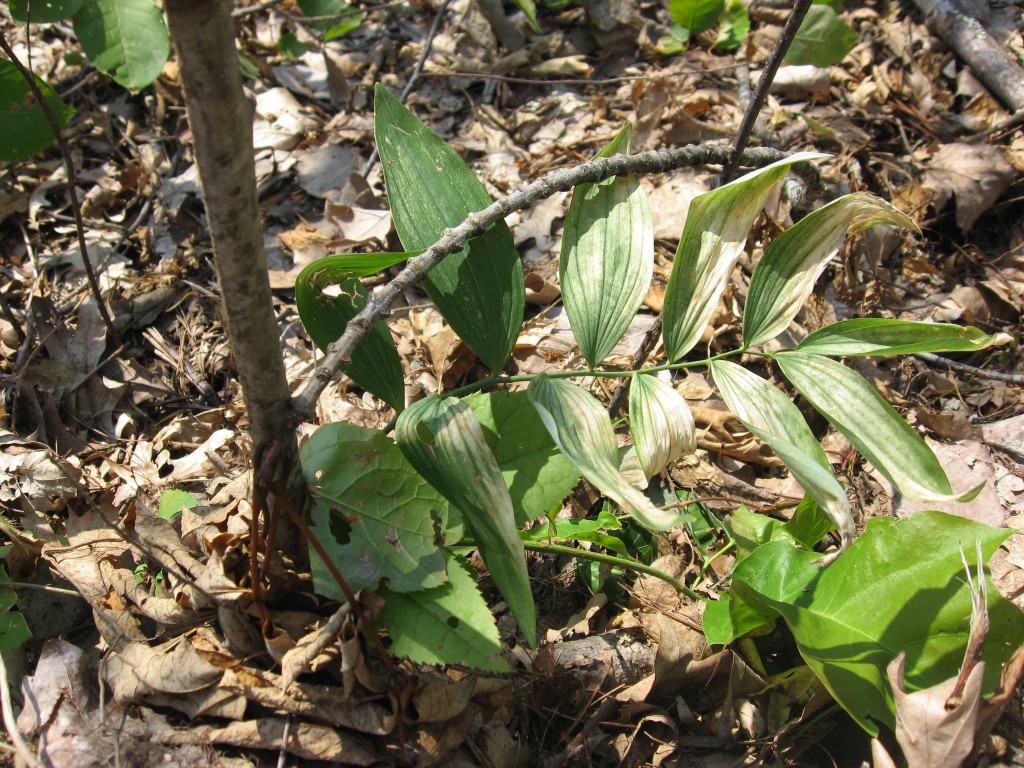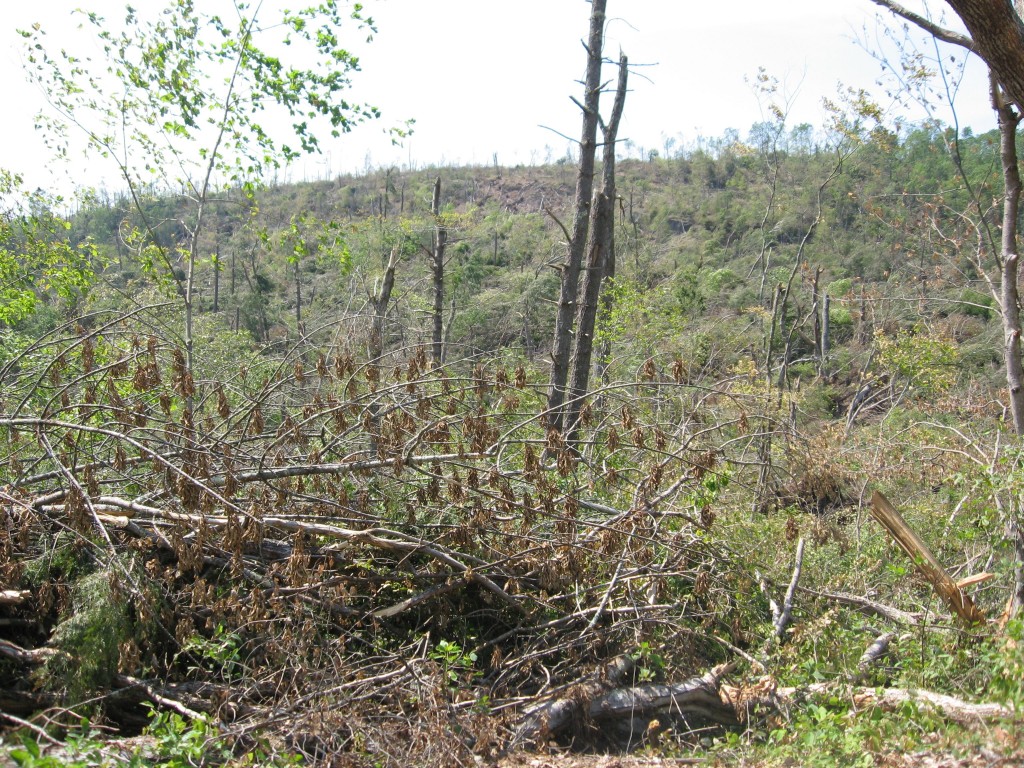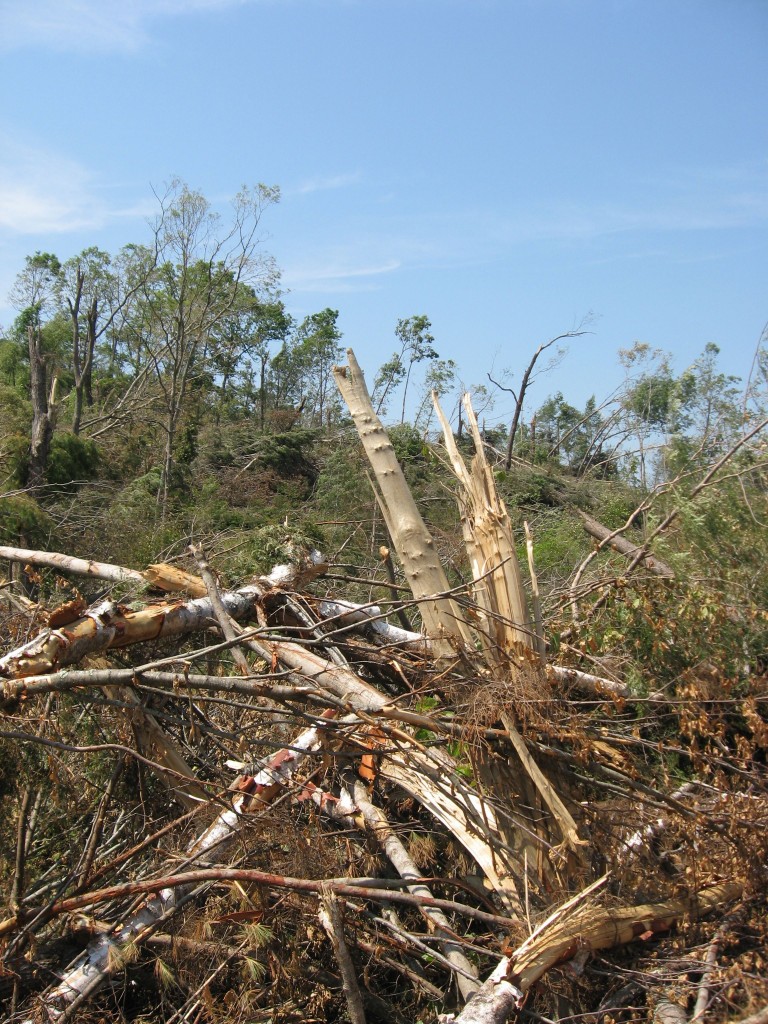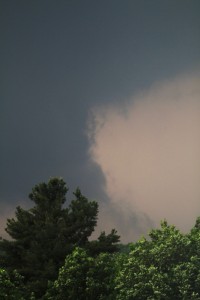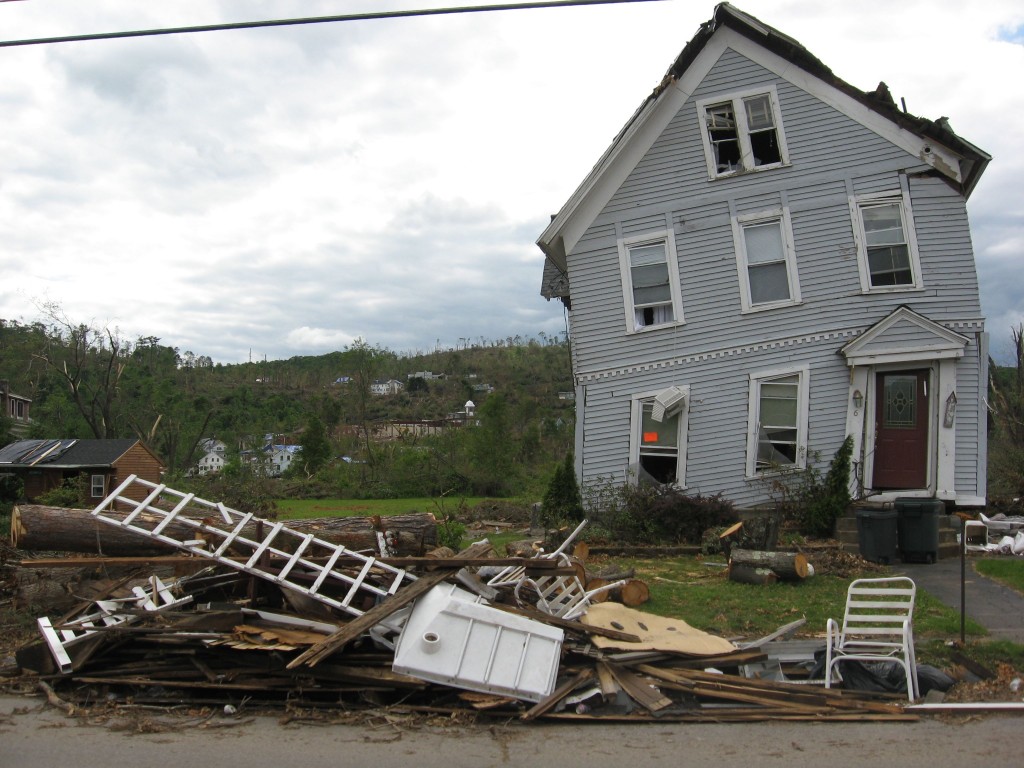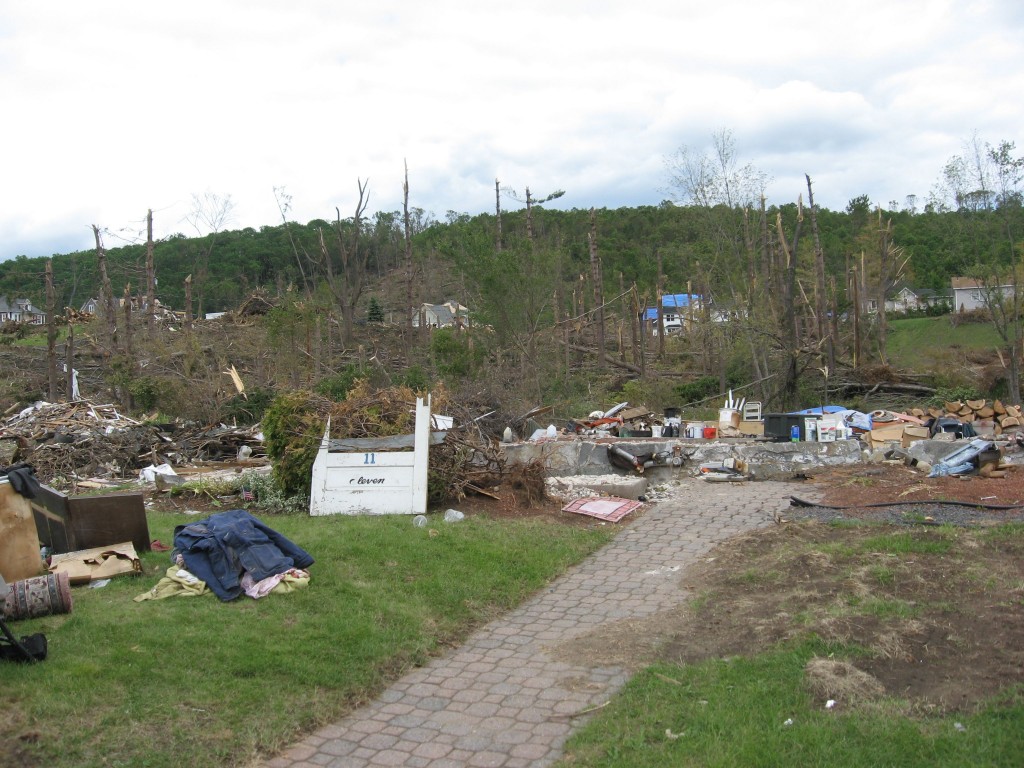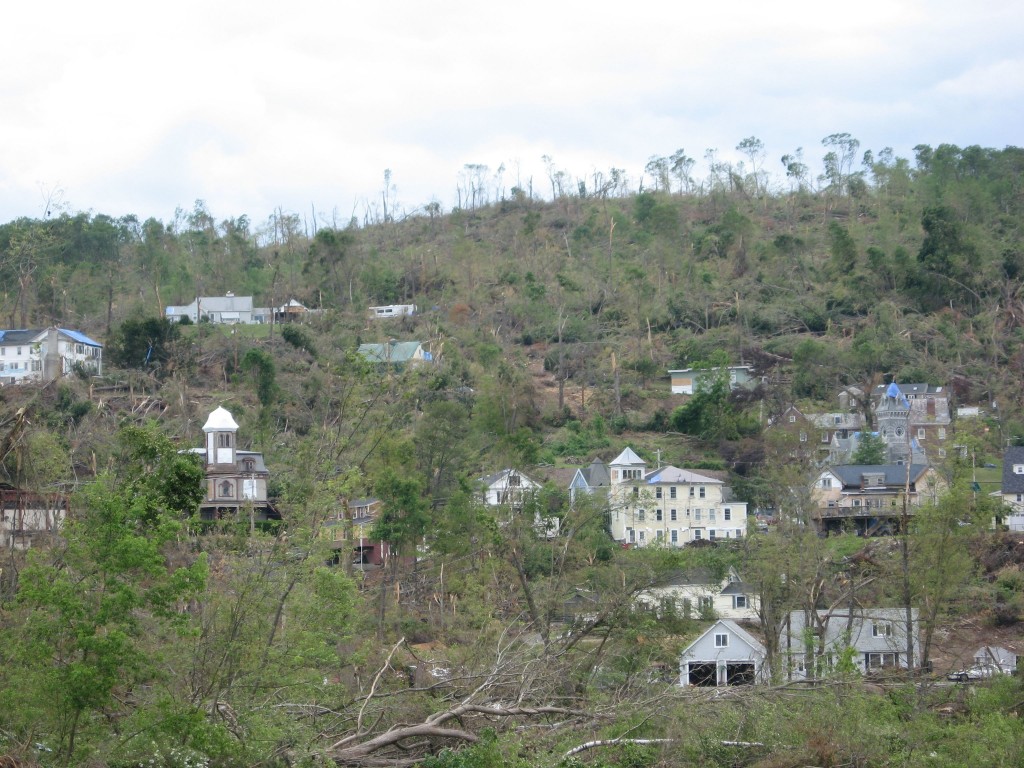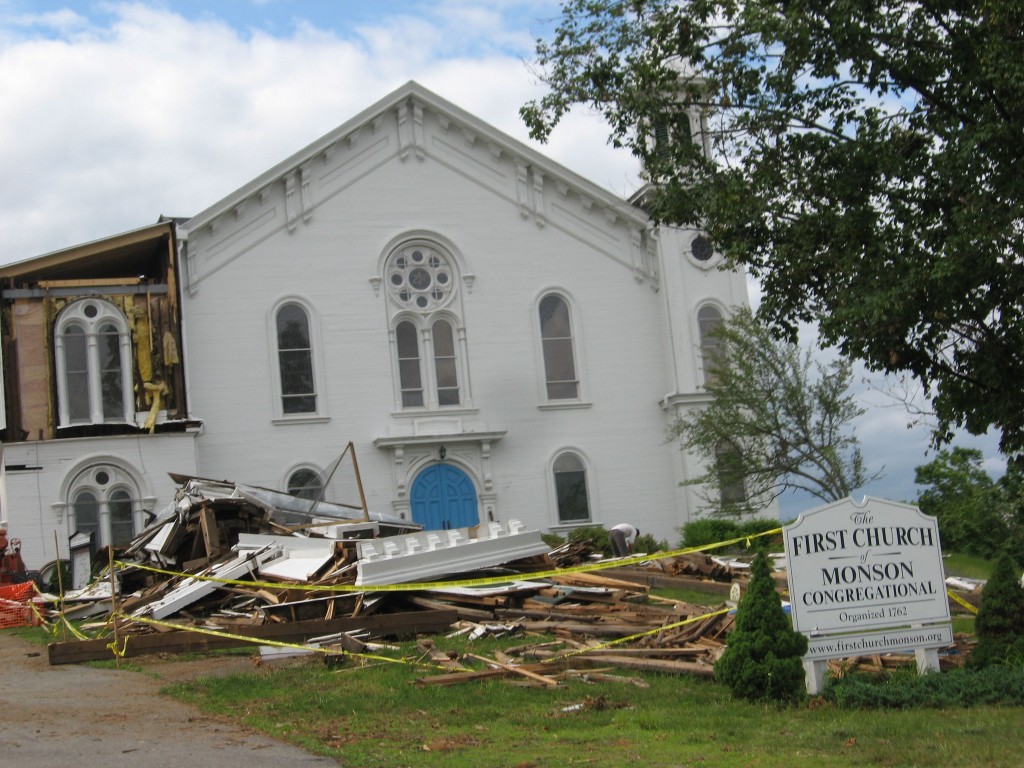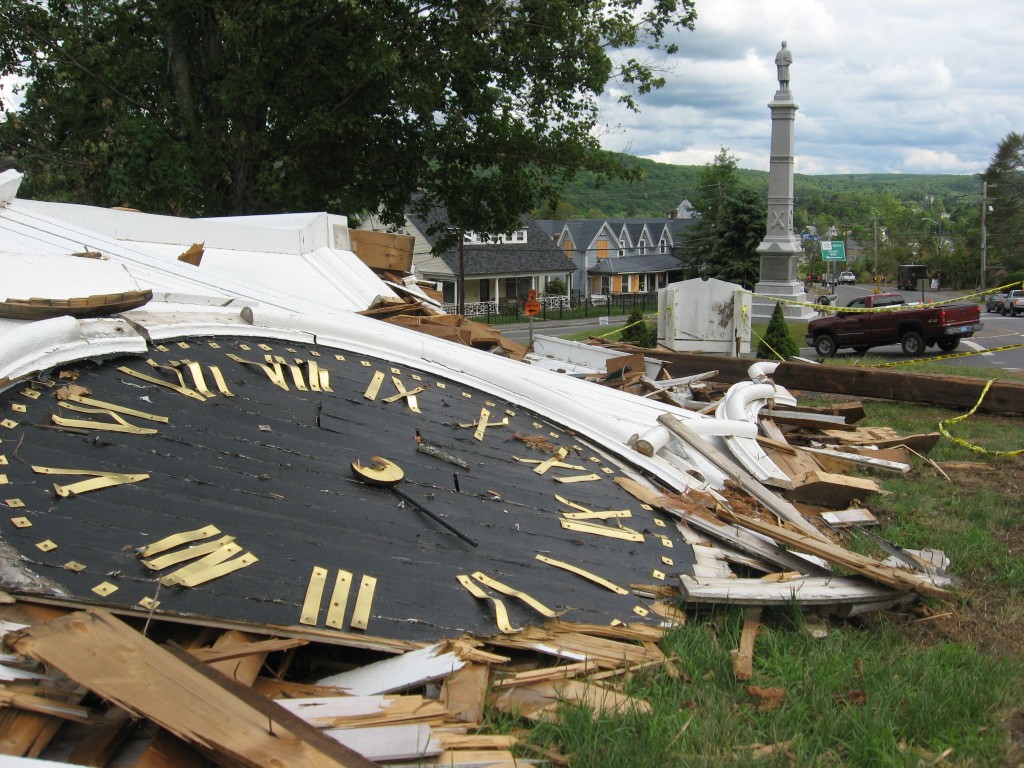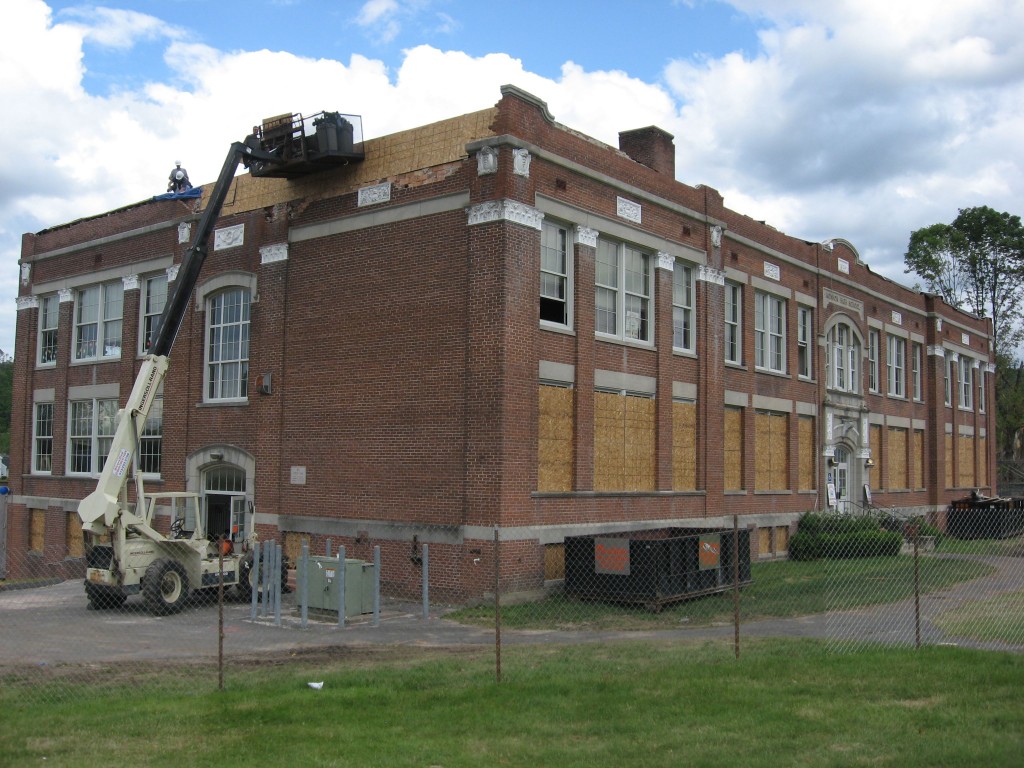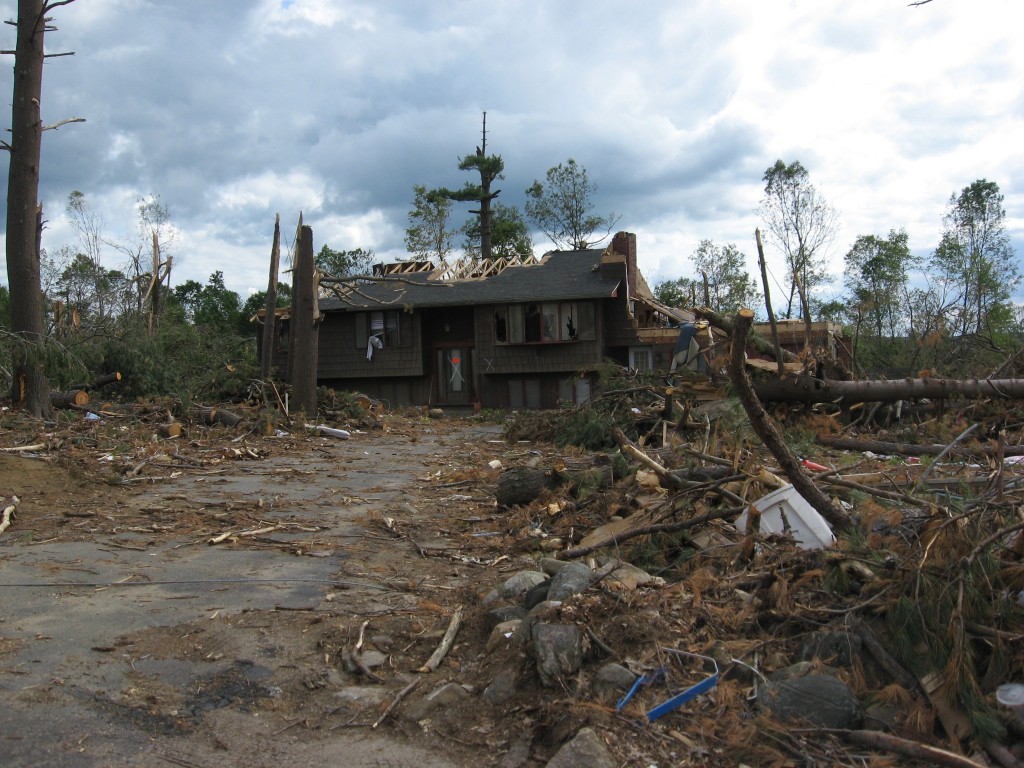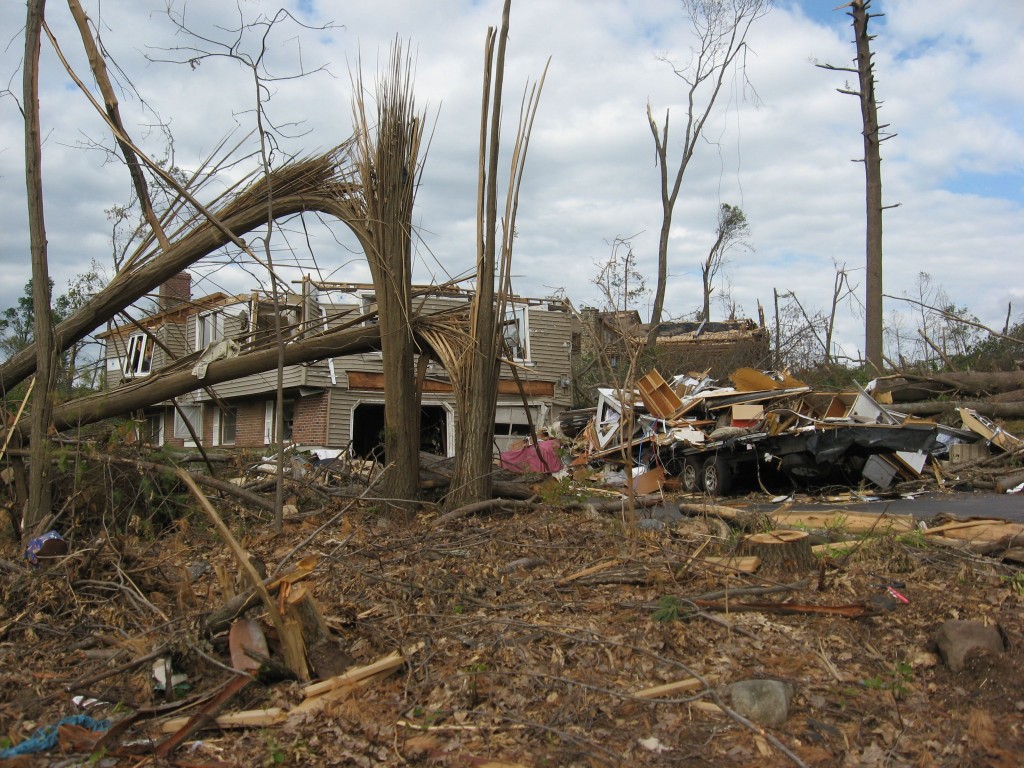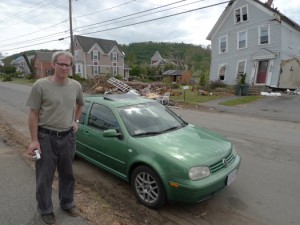THE SANGUINE ROOT TAKES A RELAXING TRIP TO OUR NEIGHBORING DELAWARE HOPING TO SEE FLOWERS AND BIRDS AT THE MOUTH OF THE DELAWARE RIVER.
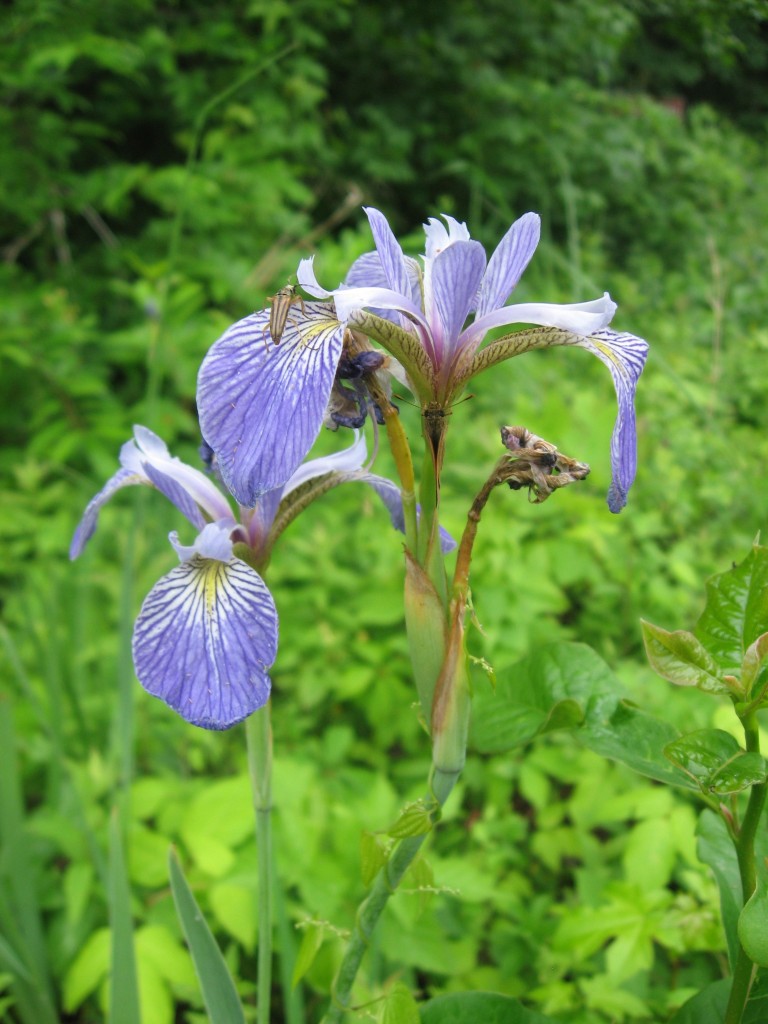
Iris versicolor
We had never seen one of these before. Not even in cultivation. However we knew what it was right away and the brakes were applied. (Bombay Hook is so vast that it is a road trip inside the sanctuary) Â Questions: Â How come this native Iris is not growing everywhere as an ornamental, while the non-native exotic ones are? Â How did this get passed by? Â Why isn’t this Iris taught in school? Why is this not the Delaware State flower instead of the native-to-China Prunus persica, the peach blossom?
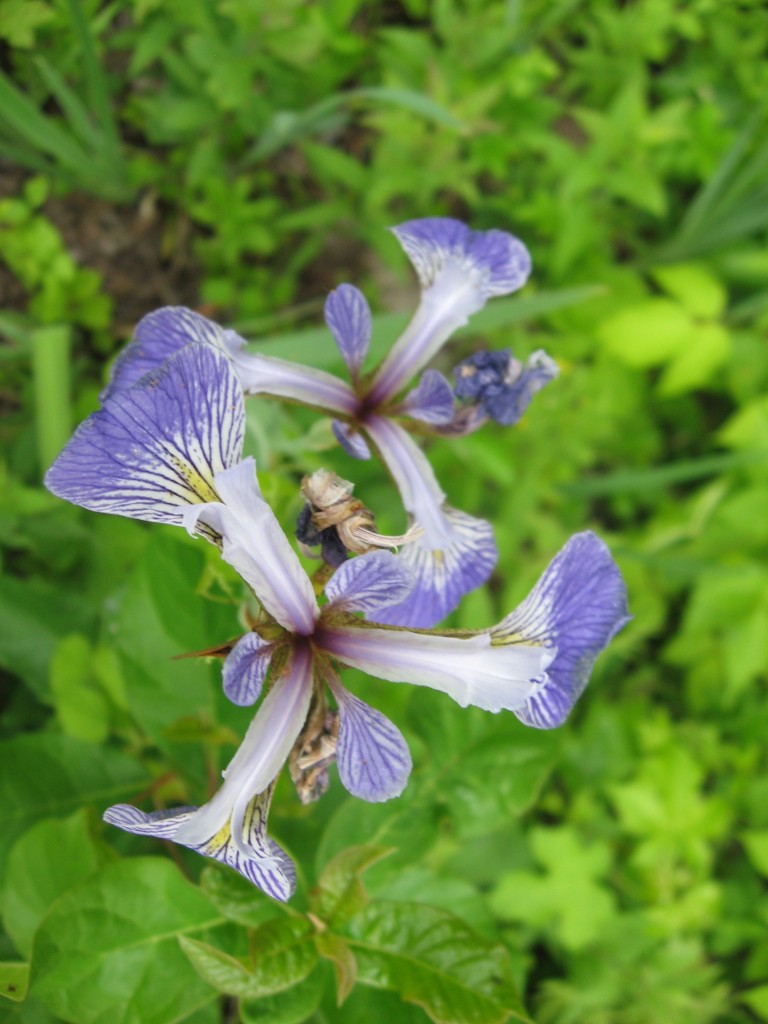
What a great discovery, a wild native Iris, growing in its ecosystem.
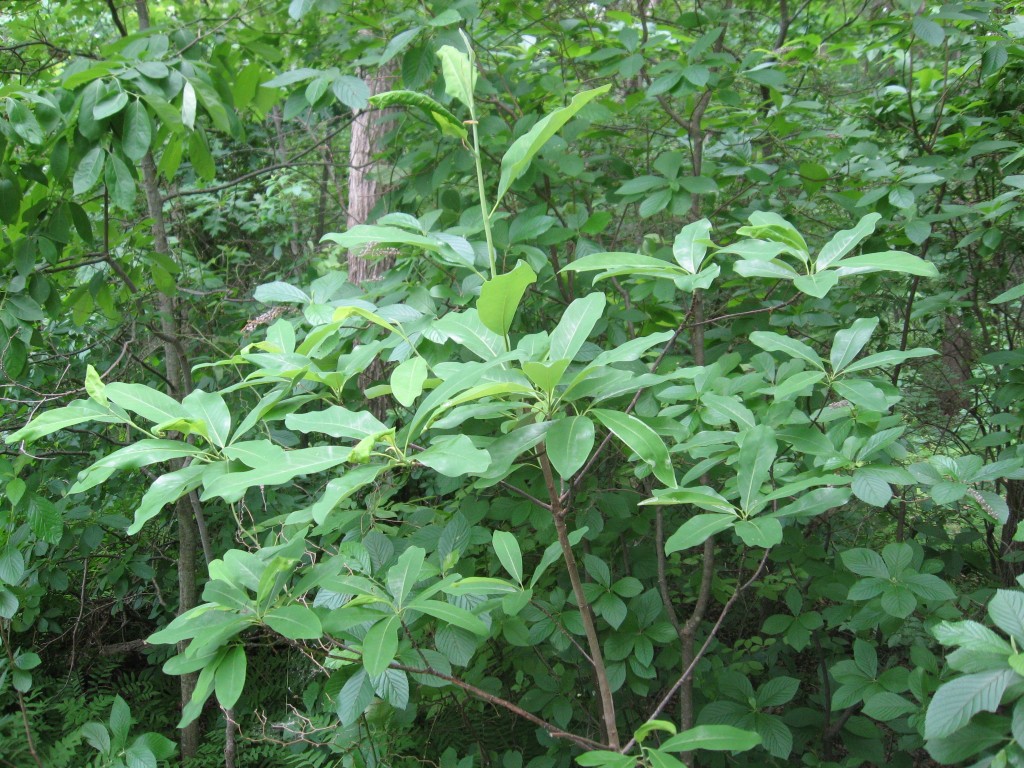
Magnolia virginiana
Finding the native Sweetbay magnolia growing in the wild is also a novel sight. Â This one blooms in the late afternoon and evening when it fills the air with an enchanting aroma.
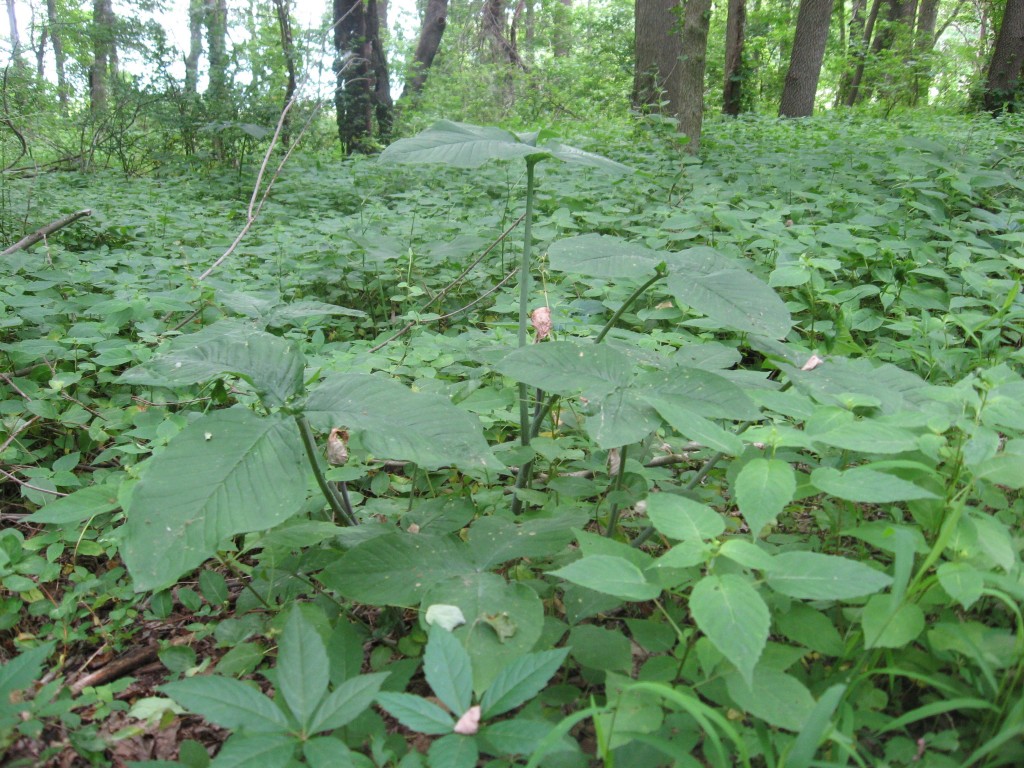
In a wooded area we saw this great patch of Jack-in-the Pulpit (Arisaema triphyllum) growing among its native woodland neighbors, the Enchanter’s nightshade (Circaea lutetiana) and the Virginia Creeper (Parthenocissus quinquefolia).
The woodland areas were full of ferns and lush herbaceous plants, however we were being bitten up by black flies. Â Also, there was an emphasis on the birds that could be viewed at this National Wildlife location and most of the other visitors at Bombay Hook were preoccupied with the birds. We decided to see if we could view some of the birds that were getting so much attention.
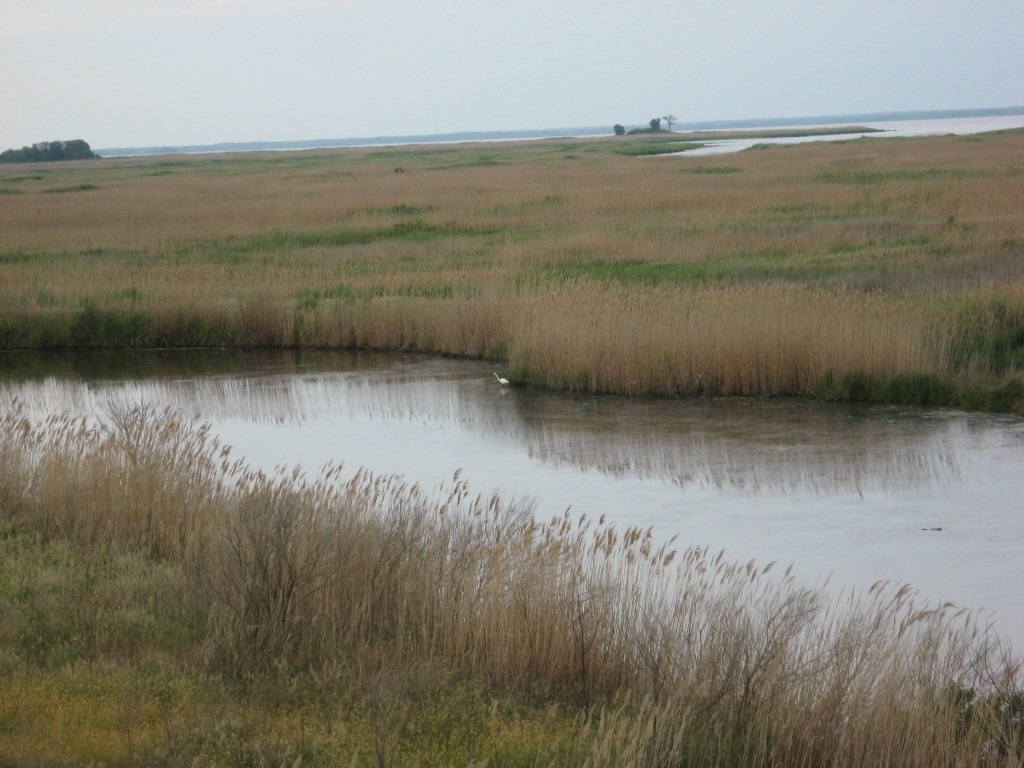
This is the place to view birds and we were very pleased at the variety of them. Â Off in the distance is the Delaware Bay. We spotted this Egret.
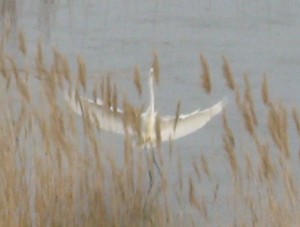
It was looking for an evening meal.
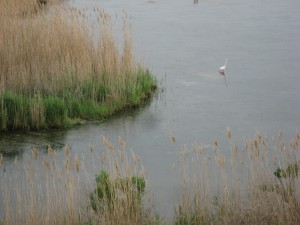
It dipped into the water for a fish.
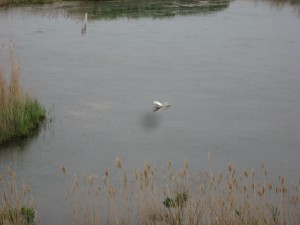
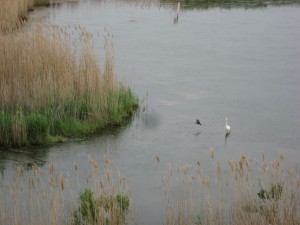
After consuming the meal, the Egret was approached by what we believe to be a male Red-Winged Blackbird.
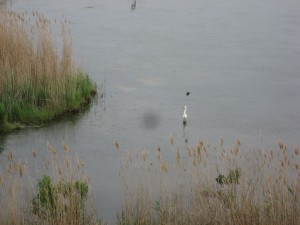
The Red- Winged Blackbird circled over the Egret and the Egret rose out of the water and opened up its broad wings and flew about 100 feet.
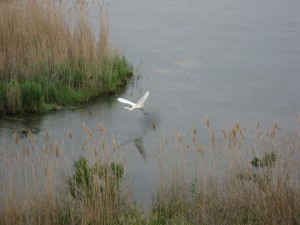
What a show! Â After it landed, it wandered into the tall marsh grasses and settled in.
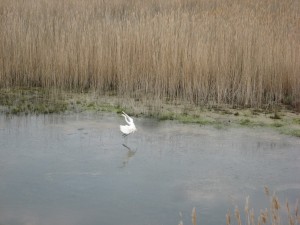
Bombay Hook provides every amenity for bird viewing, including built in telescopes, elevated structures, and signage. For beginners like us, these proved very helpful.
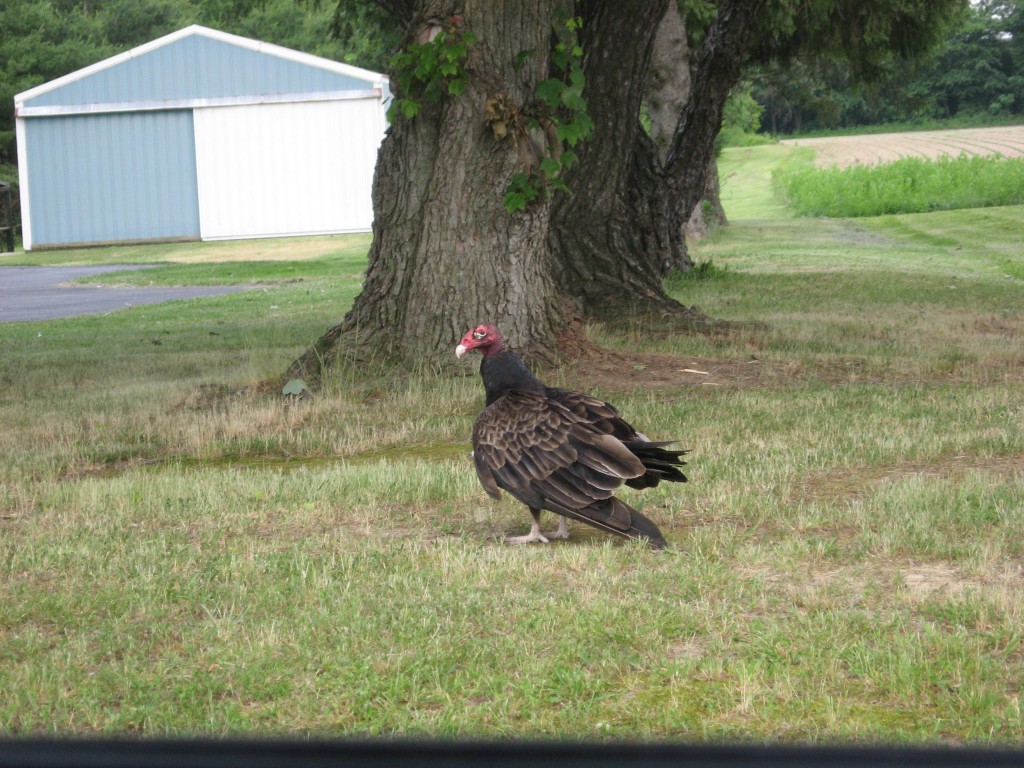
Driving north through the backroads, we spotted something that at first glance looked like an odd chicken. Oh, no, that would be  a Turkey Vulture.
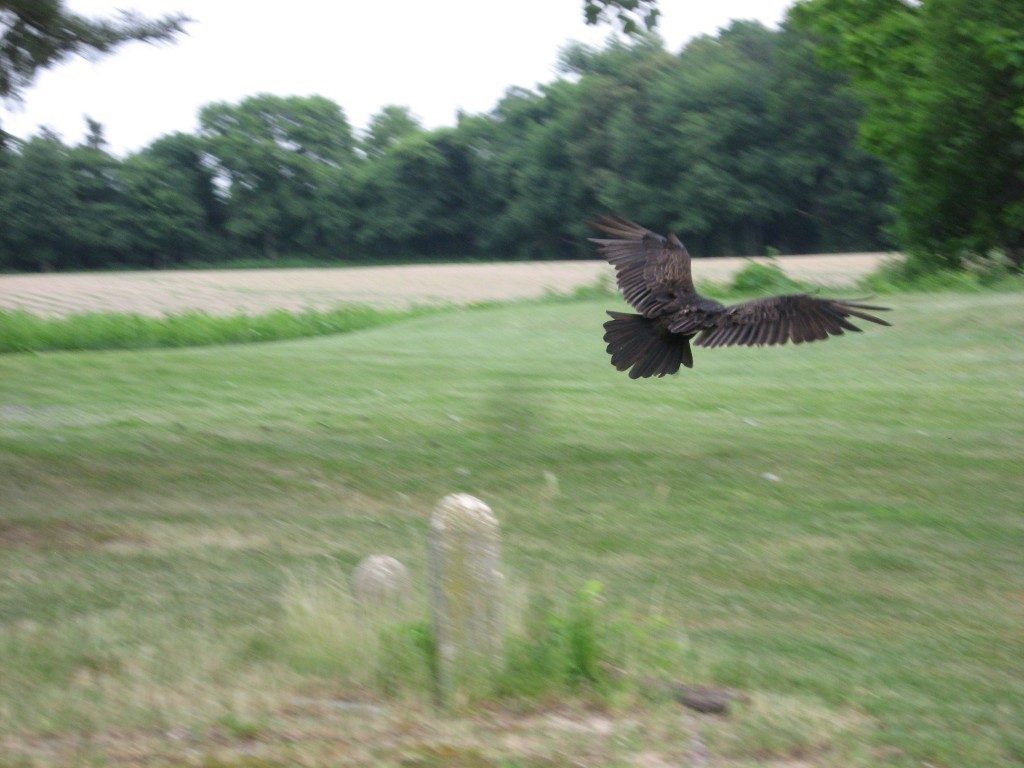
Definitely not a chicken.
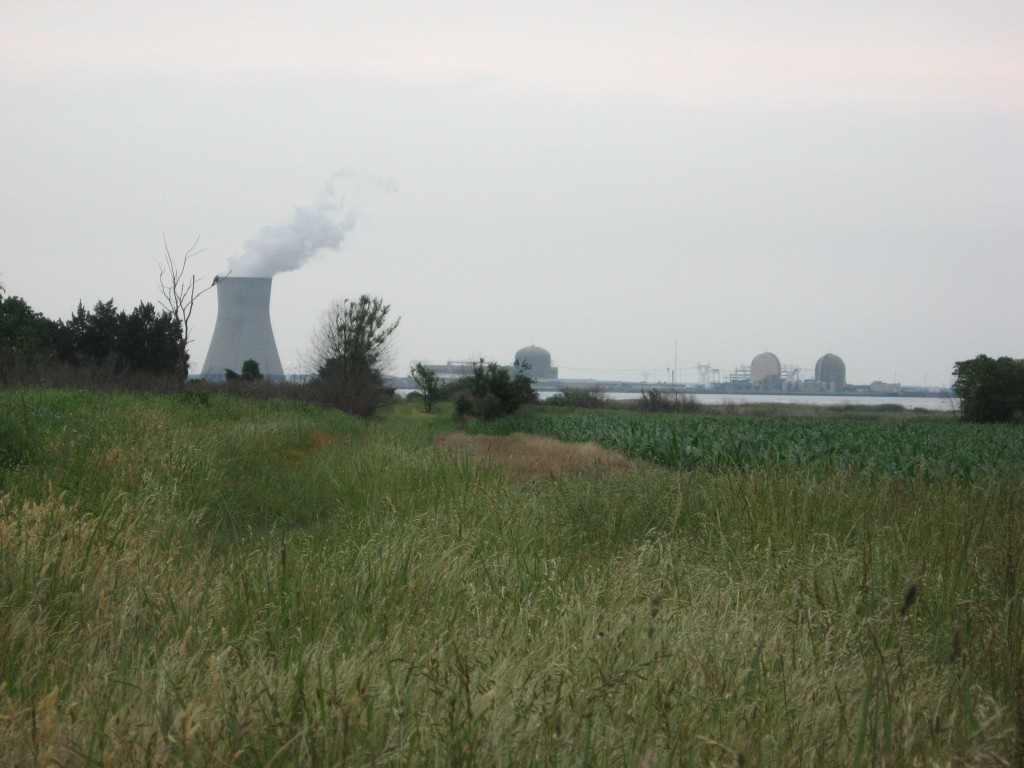
This thing loomed in the back-round all day. Yeah, that would be the Salem Nuclear plant, in New Jersey. It has the same reactor core as the now melted down Fukushima-Daiichi nuclear plant in Japan, A General-Electric Mark I. Â This one is puffing away, running all those big flat-screened tvs, among the many other amenities of modern life.
So this is what it has come to. Â Just like at the Fukushima plant, all of the radioactive waste is sitting in a pool of water beside the plant, with nowhere to go and a half-life of 10,000 years. If it has no where to go now, it will most likely have no where to go in 200 years or 2000 years. So by running this plant, there is the assumption that there will be a stable technologically advanced society that will be able to watch over this waste made 100 years ago, 200 years ago, 2000 years ago, 5000 years ago. Â That is quite a gamble to take, not just on future generations of humans, but all of the other species we live amidst. Since when has there been a stable human society that has lasted at least 500 years? Â With nuclear technology so heavily guarded, could it survive the usual turmoil of humanity over the long haul?
Overly optimistic starry-eyed apologists of the nuclear industry imagine that humans will be able to use this waste for something productive. There will be fusion reactors and micro-reactors and all sorts of nifty things going on. None of these pie-in-the sky justifications for nuclear power address the long-term issue.  As if there is an arrogance in the air that is so enamored with nuclear power and a rosy belief in a peaceful global society that is evermore technologically advanced and politically sophisticated that will last for at least 10,000 years, managing nuclear waste and the by-products of the nuclear industry and  nuclear warheads combined.
If there ever is a time to be philosophical or perhaps moralistic about something, that time is 1000 years from now. Thats right, The Staff of the Sanguine Root is not being righteous or overly moralistic here, shaking our fingers at all of the sinners among us. It is true we do not have a television, but that is no reason to be righteous and indignant.
We try to see the picture over the years, the long term, the bigger picture, the long- haul. A species-specific perspective. The Egret we saw today, catching its evening fish and having an encounter with the Red-winged Blackbird, and then retiring to the Marsh grasses for the evening says it all. Â That species has been doing the same thing for many thousands and millions of years. Try to imagine Delaware 40,000 years ago. Â What species were there? Â What did they do? How did they live? Â Anyone have any ideas? Â Please chime in. Â While the exact locations of the salt marshes may have been different, most likely there were Egrets and Red-Winged Blackbirds, Sweet-bay Magnolias, Blue-flag Irises and Red Maples.
Here, these species are still alive.
What about our species? Â We have made it complicated for ourselves and every species around us, haven’t we? Â Never before, in the billions of years of Earth’s history has uranium been refined to the extent that it has. In less than 70 years! Â Nor has the cocktail of carcinogenic and radioactive blend of materials carefully extracted from the earth, and manipulated and exposed in a variety of industrial processes have ever seen the light of day. Â Exactly what geological layer are humans creating? Â How many species will become extinct as a result? Â Exactly why is this happening, and what can be done about it? Just remember, what will 100 years from now be like? If that isn’t convincing, what about 500 years?
Are our societies really that stable? Â Just look around. How can Nuclear anything be a viable resource for anything period. Â Who are we kidding? Â Its 10,000+ years of radioactivity. Hot particles for everyone all the time- all we need is one hot particle in our lung. Fukushima is blowing them out in a hot wind.



